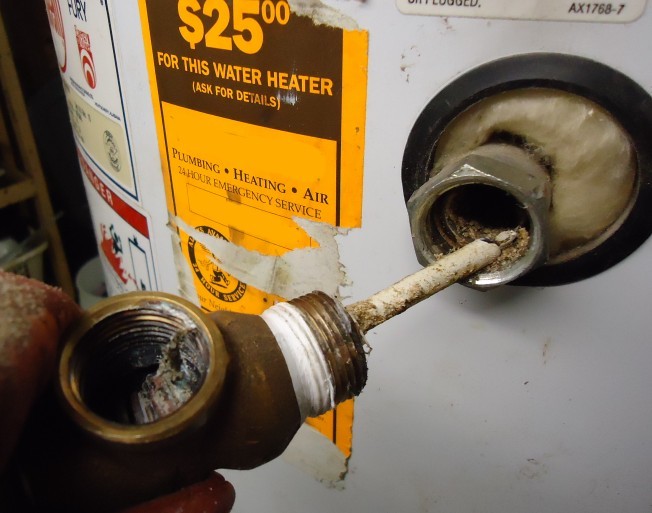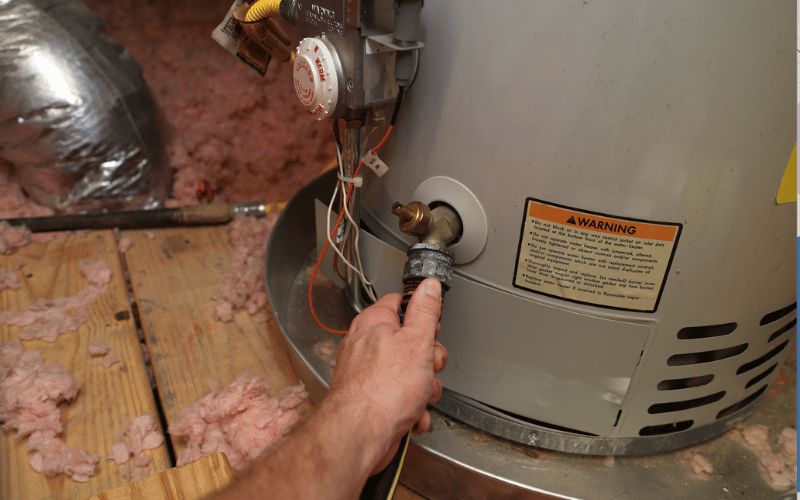Each person has got his or her own perception on the subject of What Kind of Maintenance Do Water Heaters Need?.

Warm water is vital for daily comfort, whether it's for a refreshing shower or cleaning dishes. To guarantee your hot water system runs successfully and lasts longer, normal maintenance is vital. This post provides functional tips and understandings on just how to maintain your home's warm water system to stay clear of disruptions and expensive fixings.
Introduction
Keeping your home's hot water system could seem complicated, but with a couple of simple steps, you can guarantee it operates smoothly for several years to find. This overview covers everything from comprehending your warm water system to DIY upkeep tips and understanding when to call professional assistance.
Relevance of Maintaining Your Warm Water System
Normal maintenance not only expands the lifespan of your hot water system yet also ensures it operates successfully. Neglecting maintenance can cause lowered performance, higher energy costs, and also premature failure of the system.
Indications Your Warm Water System Needs Maintenance
Recognizing when your warm water system needs interest can protect against major issues. Watch out for indications such as irregular water temperature level, weird noises from the heater, or rustic water.
Purging the Hot Water Heater
Purging your water heater removes sediment accumulation, boosting performance and lengthening its life.
Monitoring and Replacing Anode Rods
Anode rods avoid rust inside the storage tank. Checking and changing them when broken is crucial.
Facility Concerns Requiring Professional Help
Examples include major leaks, electrical issues, or if your hot water heater is constantly underperforming.
Regular Specialist Upkeep Conveniences
Specialist upkeep can consist of detailed examinations, tune-ups, and making sure compliance with security requirements.
Checking and Changing Temperature Level Settings
Changing the temperature settings guarantees optimal performance and safety.
Do It Yourself Tips for Upkeep
You can execute numerous upkeep jobs yourself to keep your hot water system in top problem.
Looking for Leakages
On a regular basis check pipes and connections for leaks, as these can lead to water damages and greater expenses.
Comprehending Your Hot Water System
Before diving right into upkeep tasks, it's useful to recognize the standard elements of your hot water system. Generally, this includes the water heater itself, pipes, anode rods, and temperature level controls.
Month-to-month Maintenance Tasks
Regular month-to-month checks can assist catch minor concerns before they escalate.
Examining Stress Relief Valves
Testing the stress relief valve ensures it operates properly and avoids too much stress buildup.
Insulating Pipelines
Protecting warm water pipelines decreases heat loss and can conserve energy.
When to Call a Specialist
While do it yourself maintenance is valuable, some problems require specialist competence.
Conclusion
Normal maintenance of your home's warm water system is necessary for efficiency, long life, and expense financial savings. By complying with these pointers and recognizing when to seek specialist assistance, you can make certain a trustworthy supply of warm water without unanticipated interruptions.
Water Heater Maintenance: The Basics
Maintaining your water heater will ensure it operates efficiently and has a longer lifespan. Neglecting regular maintenance can lead to costly repairs and an even bigger chunk of your savings if you have to replace it sooner than necessary. But there’s good news: Most water heater maintenance tasks are relatively simple and easy for homeowners with basic DIY skills.
Flush the Water Heater
Over time, sediment and minerals can build up in the tank, reducing its efficiency and potentially causing damage. To flush the tank, turn off the power or gas supply, attach a hose to the drain valve near the bottom and open the valve to drain the water until it runs clear. Ideally, flush the tank annually.
Replace the Anode Rod
The anode rod is a sacrificial metal rod that helps prevent corrosion inside the tank. Inspect and replace it every three to five years or per the manufacturer's recommendation. To replace the anode rod, turn off the power or gas supply, drain a few gallons of water from the tank, unscrew the old rod and replace it with a new one. If the anode rod is significantly corroded or covered in calcium buildup, it's a sign the water heater may need to be replaced soon.
Tune-Up
A yearly tune-up can help identify potential issues and ensure your water heater operates at peak efficiency. This typically involves checking the thermostat, burner assembly (for gas heaters) and any other components specified by the manufacturer. During a tune-up, the technician may also clean the burner and adjust the pilot light (for gas heaters) or examine the heating elements (for electric heaters).
How to Maintain Your Water Heater
Insulate the tank. Insulating the tank can improve energy efficiency and reduce heat loss, saving you money on energy bills. You can purchase precut insulation blankets designed specifically for water heaters or use standard fiberglass insulation wrapped securely around the tank. Check the temperature. The recommended water temperature for most households is around 120 degrees Fahrenheit (49 degrees Celsius). Higher temperatures can increase energy costs and potentially cause scalding. Use a kitchen thermometer to check the temperature at the faucet nearest the water heater. Monitor water pressure. Excessive water pressure can strain the water heater and cause leaks or even tank failure. Install a pressure-reducing valve if necessary. The ideal water pressure range is between 60 and 70 PSI (pounds per square inch). Test the temperature and pressure (T&P) relief valve. The T&P relief valve is a safety feature that releases pressure if the tank gets too hot or the pressure builds up too high. Test it annually by lifting the lever and allowing a small amount of water to release. Replace the valve if it doesn't release water or reseal properly. Check for leaks. Regularly inspect the tank, pipes and fittings for leaks or corrosion. Deal with issues promptly to prevent further damage. Even a small leak can lead to significant water damage over time. Consider a tankless water heater. If your traditional tank-style water heater is nearing the end of its lifespan ( typically 10 years), consider replacing it with a tankless water heater. These units heat water on demand, reducing standby energy losses and potentially saving you money on your energy bills. Schedule professional maintenance. While homeowners can perform many water heater maintenance tasks, it's still a good idea to schedule professional maintenance every few years. A plumber or HVAC technician can thoroughly inspect the unit, identify potential issues and ensure it operates safely and efficiently. https://www.homeserve.com/en-us/blog/home-improvement/hot-water-heater-maintanence/

I stumbled upon that write up on What Kind of Maintenance Do Water Heaters Need? when doing a lookup on the internet. Are you aware of someone else who is fascinated with the subject? Why not share it. Thanks a lot for your time invested reading it.
Go Deal Now